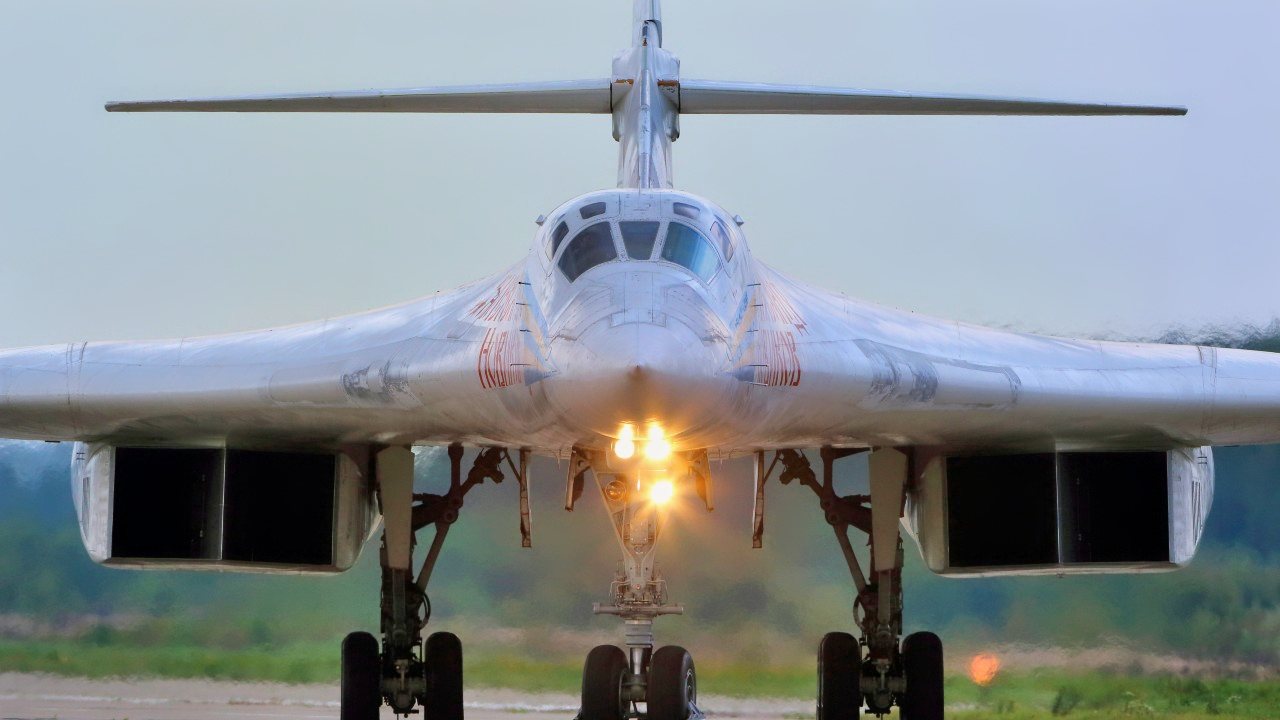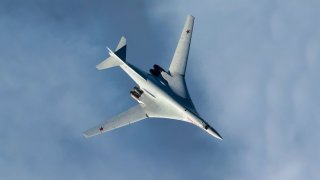Russia's Tu-160 Blackjack Bomber Is Getting a Serious Upgrade
Despite setbacks in Ukraine, Russia's military showcases formidable assets like the Tu-160 Blackjack strategic bomber. In February, amidst ongoing conflicts, Russian President Vladimir Putin highlighted this prowess by flying in a modernized Tu-160, signaling a robust defense industry.
Summary: Despite setbacks in Ukraine, Russia's military showcases formidable assets like the Tu-160 Blackjack strategic bomber. In February, amidst ongoing conflicts, Russian President Vladimir Putin highlighted this prowess by flying in a modernized Tu-160, signaling a robust defense industry. The updated aircraft boasts stealth-enhancing coatings, enhanced engines for greater range, and sophisticated electronic warfare systems, reaffirming its strategic bombing role.
A Modern Flight: The Tu-160 Is Getting a Serious Update
The Russian military might be taking a serious beating in Ukraine, but it still fields some impressive weapon systems. The Tu-160 Blackjack strategic bomber is one of them. And in February, the aircraft got a rare day in the news after a visit from the top.
In February, Russian President Vladimir Putin flew in a modernized Tu-160 Blackjack strategic bomber.
The short flight took place in central Russia, far away from hostilities in Ukraine.
The Russian leader took the event as an opportunity to tout the Russian defense and aerospace industries after 25 months of failure in Ukraine.
“It's a new machine, a lot about it is new. It's easier to control. It's reliable,” Putin said afterward.
Of course, the flight had an aroma of propaganda. The Tu-160 bomber took off and landed from a runway near the factory that produces the aircraft in Kazan.
The aircraft is manufactured by Tupolev and requires a crew of four men. Approximately 20 of these bombers are active with the Russian Aerospace Forces.
The Modernized Tu-160 Blackjack Strategic Bomber
The modernized version of the Tu-160 features a new low-observable coating to reduce the strategic bomber’s radar signature and make it stealthier. It also uses new engines with increased performance and better operational range. It has an improved cockpit and new electronic warfare capabilities and countermeasures, as well as better communications and control systems.
Overall, the Tu-160 Blackjack is an impressive aircraft. Operational since 1987, the nuclear-capable strategic bomber is the largest and heaviest supersonic military aircraft in history. An impressive feat of aerodynamics and engineering, the Tu-160 Blackjack has one main mission: strategic bombing. In the event of a conflict with the United States and NATO, the Russian Aerospace Forces would use the Tu-160 Blackjack against high-value targets or as a platform to launch nuclear weapons, depending on the level of escalation.

The Russian bomber can fire twelve Raduga Kh-55SM/101/102/555 cruise missiles in two internal rotary launchers, or twelve AS-16 Kickback short-range nuclear weapons. All told, the Tu-160M Blackjack can carry almost 100,000 lbs of ordnance. The Russian Aerospace Forces have been using the aircraft in Ukraine in strategic bombing missions against Ukrainian urban centers, critical infrastructure, and the country’s power grid.
With a range of approximately 12,000 kilometers (7,500 miles), the Tu-160 Blackjack can deliver its payload at great distances. Mid-air refueling can extend its operational range.
The aircraft uses four Samara NK-321 jet engines, each of which can produce almost 31,000 lbs of thrust at normal speeds, and 55,000 lbs each with afterburner. As a result, the aircraft can reach speeds over Mach 2, exceeding 1,500 miles per hour.
The Tu-160 Blackjack is a powerful, dangerous aircraft that could pose a serious threat in a near-peer conflict. However, the aircraft significantly lacks in stealth capabilities, thus limiting its ability to conduct deep-penetration strikes in a non-nuclear environment.
About the Author
Stavros Atlamazoglou is a seasoned defense and national security journalist specializing in special operations. A Hellenic Army veteran (national service with the 575th Marine Battalion and Army HQ), he holds a BA from the Johns Hopkins University, an MA from the Johns Hopkins’ School of Advanced International Studies (SAIS). He is pursuing a J.D. at Boston College Law School. His work has been featured in Business Insider, Sandboxx, and SOFREP.
Images Credit: Shutterstock.


